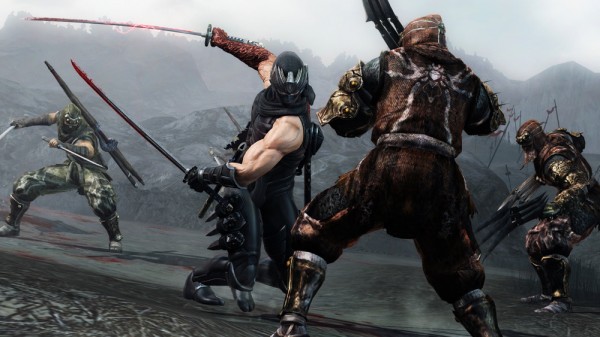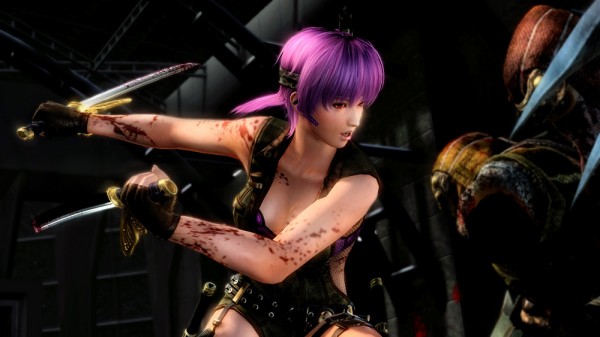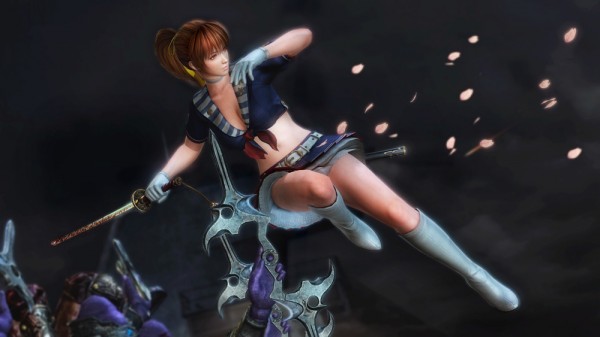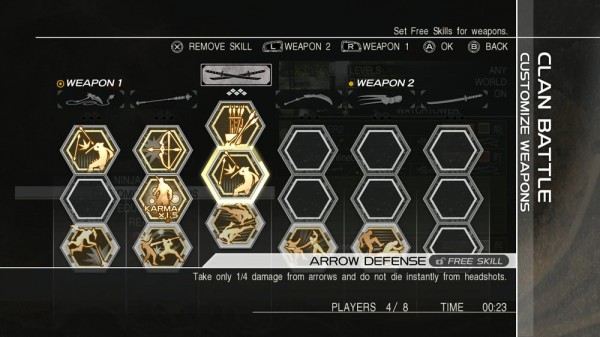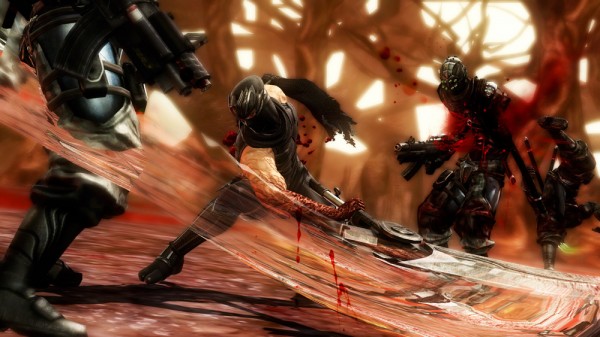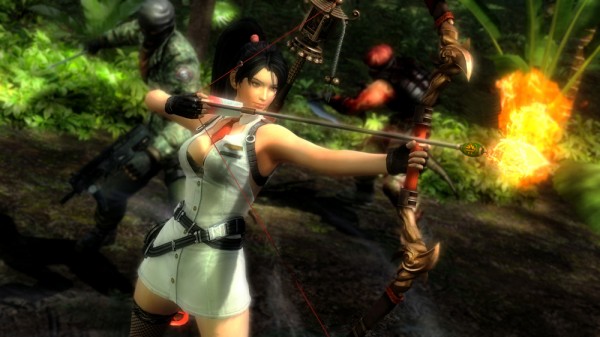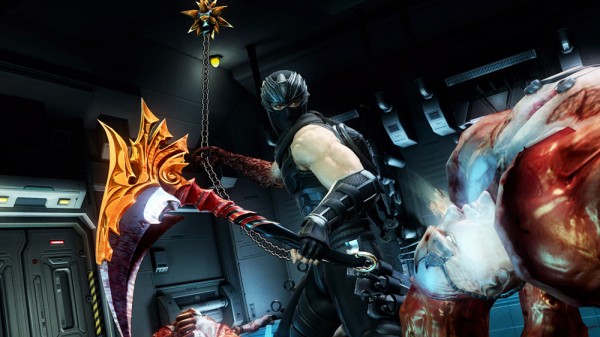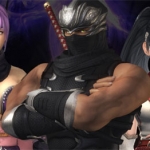
The original Ninja Gaiden 3 released in March of 2012 on the Xbox 360 and PlayStation 3 as the anticipated follow up to 2008’s Ninja Gaiden 2. This third installment in the beloved franchise met with some harsh criticisms upon release, most notably concerning the game’s writing, its shallow combat, and its lack of progression. Team Ninja listened to the fans and critics, and in late 2012 they released an updated version of the game called Ninja Gaiden 3: Razor’s Edge for the WiiU. Now Razor’s Edge has made its way to the Xbox 360 and PlayStation 3, and non-Nintendo players can find out whether the gameplay updates warranted a new edition.
I’ll save you the suspense by telling you up front that Razor’s Edge absolutely is worth the redo. This version of the game packs enough new features, modes, and options in to convince me that this is the game they meant to make at the beginning of 2012. It adds to, subtracts from, and refines the set of gameplay elements intelligently, and Razor’s Edge also packs in all the DLC from the original Ninja Gaiden 3 as an added bonus. The suggested retail price of just $39.99 at release makes an even stronger argument for picking up this revision, even if you’ve given the original a shot.
The most advertised new feature in the game is the inclusion of three additional playable characters, all of them female ninjas. Kasumi and Ayane are familiar faces from both Dead or Alive and Ninja Gaiden’s backstory, while Momiji returns from Ninja Gaiden Sigma 2. Ayane is woven into the main single player story of the game with a couple of her own playable chapters that fall in between Ryu Hayabusa’s standard chapters. Momiji appears in the single player game but is not playable by default. You get full access to all three of the ladies when you go into the game’s alternate modes, such as the Chapter Challenges that let you replay any of the main game’s sections as any of the four characters. All four characters have their own skill and weapon sets that are distinct enough to make playing all of them worthwhile but similar enough to allow for easy transitions between them.
Varying skills and weapons should be of interest to anyone who felt Ninja Gaiden 3 lacked depth and progression. In Razor’s Edge, Ryu gains several new weapons beyond his standard samurai sword, including ninja claws, a giant scythe, a staff, and more. To accompany those weapons, Ryu and the other characters also gain upgrade screens. As you play through the game, you will earn Karma points that you then will spend on upgrades that range from new combat and traversal maneuvers to more expansive weapon moves to new Ninpo spells and even new costumes. This upgrade system is newly added for Razor’s Edge and provides some awesome empowerment, as well as a good metagame to drive you through the levels.
Combat is front and center in Razor’s Edge, as well it should be. The Ninja Gaiden series has a lot of mystical and technological trappings, but all of that just provides excuses and arenas for you to slice and dice wave after wave of opponents. The fighting system remains as challenging as ever, and newcomers to the series will have a tough time progressing far at all on even the normal difficulty setting. I started my first playthrough on medium, and it didn’t take long for me to figure out that I’d bitten off more than I could chew. I dialed things down to the easier setting, and that proved to be a more manageable but still challenging experience.
The game consists mostly of running from one arena-like room to the next while assorted bad guys pour in after you. The baddies vary from ninjas to soldiers to monsters, and bigger baddies show up frequently to bolster their ranks. You also will encounter your fair share of boss enemies, starting with a spider tank robot thing that seems extremely daunting at the beginning of the game but will feel like child’s play after you’ve dealt with the ensuing bosses that populate the rest of the game. Delivering killing blows and impactful combos never gets old, although chopping your way through standard attacks to get there will lose its luster after a while. A lot of the fighting boils down to hammering the X (or square) button over and over until you wear your enemy down enough to launch an awesome heavy attack. There are several meters you can activate and systems in play while you’re doing that button mashing, so there is a method to the madness, even when it gets a bit tedious.
Team Ninja improved upon nearly every aspect of the game that needed bettering after Ninja Gaiden 3’s original release, but the one nut they still can’t seem to crack is cramming all the cool gameplay into a story that makes a lick of sense. After playing through the whole game and repeating several parts in Chapter Challenge mode, I still don’t know what the hell is going on through most of the single player story. It has something to do with curses, dinosaurs, digital ninja wizards, and little girls, but none of it ever congeals into a coherent narrative. After a while, you’ll just have to roll with it, and you’ll be able to enjoy the pretty animation and crazy action, even if you’re not able to place any of it into a context that has any sort of continuity or flow. As I said before, combat is front and center for Ninja Gaiden, and the game definitely delivers in that area. Having a bunch of blended gibberish for the story hardly matters after the first hour or so, and it ends up being nothing more than window dressing to allow for some cool set pieces and bridges between the fights.
In addition to the single player story, Ninja Gaiden 3: Razor’s Edge also packs in the aforementioned Chapter Challenges, as well as a Shadows of the World sub-menu that leads to co-op and competitive multiplayer modes. As you play through the multiplayer, you’ll start building up your own personal ninja. You will gain Karma to spend specifically on his skills and weapons, and you’ll also unlock new customization for his appearance and costume. All the additional modes provide a ton of extra content to keep you busy long after you’ve completed the game’s main story mode (which took me about nine hours to conclude).
Razor’s Edge is what Ninja Gaiden 3 should have been, and it’s great that Team Ninja has fixed the problems in the previous game to present this new and better product. Sure, it seems like a sucky proposition for fans who already dropped money on the original game, but Razor’s Edge doesn’t feel like an intentional double dip from the publisher, ala Capcom’s countless revisions of their games. Rather, it’s a course correction that speaks to the developer’s desire to give the fans what they want, and the reduced price tag takes a little bit of the sting out of this necessary repurchase. And hey, if you have yet to play Ninja Gaiden 3 at all, this is the perfect way to come aboard. Ninja Gaiden 3: Razor’s Edge released on Xbox 360 and PlayStation 3 on April 2, 2013, and is in stores now.


